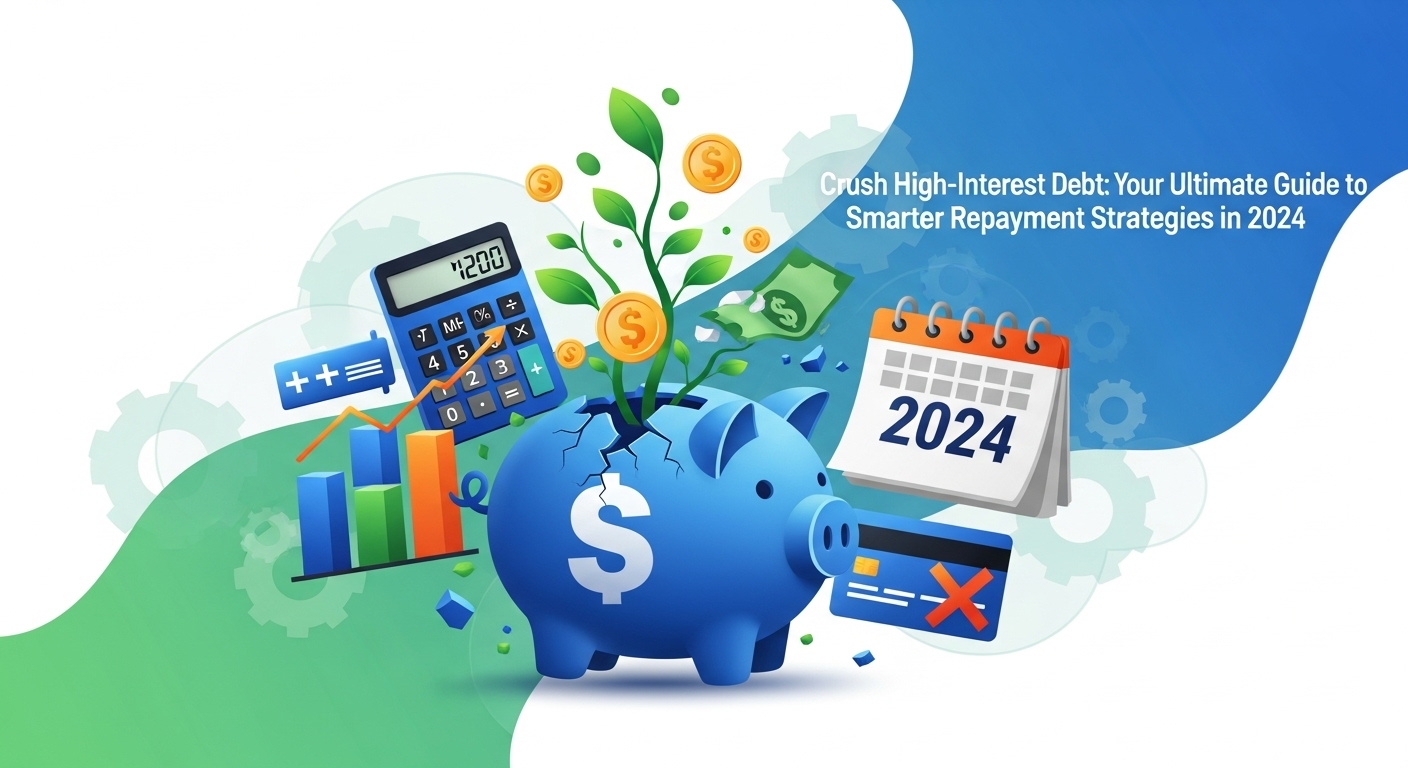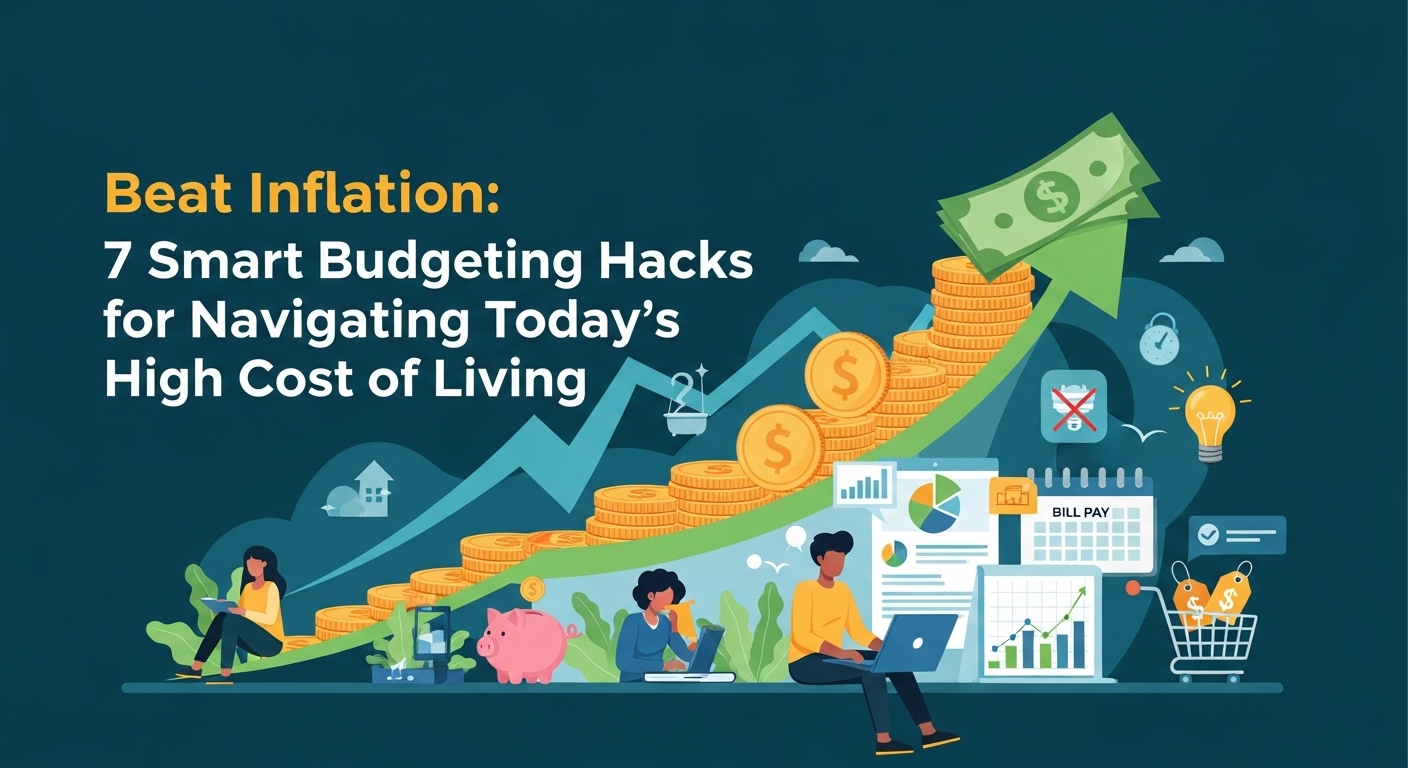The Crushing Weight of High-Interest Debt
Does the thought of your credit card statements make your stomach churn? You’re not alone. Millions of people feel trapped in a cycle of high-interest debt, where it seems like every payment barely makes a dent in the principal balance. It’s a heavy burden that can impact your mental health, relationships, and ability to plan for the future. The constant drip of interest charges feels like trying to fill a bucket with a hole in it. But what if we told you there’s a way to patch that hole and finally start filling your bucket? In 2024, it’s time to stop letting debt control your life. This guide will equip you with the knowledge and strategies to systematically attack and eliminate your high-interest debt, paving the way for financial freedom.
Understanding the High-Interest Debt Trap
Before you can fight the enemy, you need to understand it. High-interest debt typically comes from sources like credit cards, payday loans, and some personal loans. The defining feature is an Annual Percentage Rate (APR) that significantly outpaces inflation and standard investment returns, often sitting in the double digits (15%, 20%, or even higher).
How Compound Interest Works Against You
Compound interest is a powerful force. When you’re investing, it’s your best friend. But when you’re in debt, it’s your worst enemy. It means you’re not just paying interest on the money you originally borrowed; you’re paying interest on the accumulated interest. Let’s imagine you have a $5,000 credit card balance with a 22% APR. If you only make minimum payments, it could take you over a decade to pay it off, and you could end up paying more in interest than the original amount you borrowed. This is the trap: minimum payments are designed to keep you in debt for as long as possible, maximizing the lender’s profit. Breaking free requires a proactive, strategic approach.
The First Step: Creating Your Debt Inventory
You can’t create a map to your destination if you don’t know your starting point. The very first, non-negotiable step is to get a crystal-clear picture of exactly what you owe. It might feel scary, but this clarity is empowering. It transforms a vague, overwhelming monster into a defined set of numbers you can tackle one by one.
Gather Your Statements
It’s time for a financial deep dive. Log into every account and gather the following information for each debt:
- Creditor Name: Who do you owe? (e.g., Chase, Capital One, SoFi)
- Total Balance: The exact amount you currently owe.
- Minimum Monthly Payment: The smallest amount you’re required to pay.
- Interest Rate (APR): This is the most critical piece of information. Find the exact percentage.
Build a Master List
Organize this information in one place. A simple spreadsheet is perfect for this. Create columns for the details listed above. Seeing it all laid out will not only help you strategize but also serve as a powerful tracking tool as you start to see those balances shrink. This single document is the foundation of your entire debt repayment plan and a crucial element of managing your personal finance.
Choosing Your Weapon: The Two Main Repayment Strategies
Once you have your debt inventory, it’s time to choose your method of attack. The two most popular and effective strategies are the Debt Avalanche and the Debt Snowball. They both work, but they appeal to different psychological drivers.
The Debt Avalanche Method (The Mathematical Approach)
The Debt Avalanche is the most financially efficient strategy. Here’s how it works:
- Organize your debts from the highest interest rate to the lowest.
- Make the minimum payment on all your debts.
- Allocate every extra dollar you can find in your budget towards the debt with the highest interest rate.
- Once that debt is paid off, you take all the money you were paying on it (the minimum payment plus the extra) and roll it into the payment for the debt with the next-highest interest rate.
- Repeat until you are debt-free.
Pros: This method saves you the most money in interest over the long run. It’s the cold, hard, logical choice for minimizing the total cost of your debt.
Cons: It might take a while to pay off that first debt, especially if it has a large balance. This can sometimes feel discouraging if you’re someone who needs quick wins to stay motivated.
The Debt Snowball Method (The Psychological Boost)
The Debt Snowball, popularized by financial guru Dave Ramsey, focuses on behavior and motivation. Here’s the game plan:
- Organize your debts from the smallest balance to the largest, regardless of the interest rate.
- Make the minimum payment on all your debts.
- Allocate every extra dollar you can find in your budget towards the debt with the smallest balance.
- Once that debt is paid off, you get a huge psychological win! You then take all the money you were paying on it and roll it into the payment for the next-smallest balance.
- Repeat, creating a ‘snowball’ of money that grows larger and larger as you knock out each debt.
Pros: This method provides quick wins that build incredible momentum. Paying off an entire account, even a small one, feels amazing and can provide the motivation needed to stick with the plan for the long haul.
Cons: You will likely pay more in total interest compared to the Avalanche method because you’re not prioritizing the most mathematically damaging debts first.
Which One is Right for You?
There’s no single right answer. If you’re a numbers-driven person who is motivated by efficiency and saving the most money, the Debt Avalanche is for you. If you know you need those early victories to stay in the game and build momentum, the Debt Snowball is a fantastic choice. The best plan is the one you’ll actually stick with.
Supercharge Your Repayment: Proven Tactics to Accelerate Progress
Choosing a strategy is half the battle. The other half is finding more money to fuel your attack. The more ‘extra’ money you can throw at your debt each month, the faster you’ll reach the finish line.
Create a Realistic Budget
Budgeting isn’t about restriction; it’s about intention. You need to know where your money is going. Track your income and expenses for a month to identify areas where you can cut back. Are there subscriptions you don’t use? Can you reduce your dining-out expenses? This isn’t about depriving yourself of all joy, but about consciously redirecting your funds toward your most important goal: becoming debt-free.
Increase Your Income
There are two sides to the financial equation: spending less and earning more. Consider picking up a side hustle like freelance writing, food delivery, or pet sitting. Ask for a raise at your current job if you’ve earned it. Sell unused items around your house on platforms like Facebook Marketplace. Every extra dollar earned is another soldier in your debt-crushing army.
Consider Debt Consolidation
If you have multiple high-interest debts, consolidation can be a powerful tool. This involves combining your debts into a single new loan, ideally with a much lower interest rate. Two common options are:
- Balance Transfer Credit Cards: Many cards offer a 0% introductory APR for 12-21 months. You can transfer your high-interest balances to this new card and pay them off interest-free during the promotional period. Be aware of transfer fees and have a solid plan to pay off the balance before the high regular APR kicks in.
- Personal Loans: If you have good credit, you may qualify for a personal loan with a fixed interest rate that is significantly lower than your credit card APRs. This gives you a single, predictable monthly payment and a clear end date for your debt.
A crucial warning: Consolidation is a tool, not a magic cure. It only works if you commit to stop accumulating new debt. Don’t fall into the trap of freeing up your old credit cards only to run up new balances.
Take Control of Your Financial Future Today!
Crushing high-interest debt is a marathon, not a sprint, but it is one of the most rewarding journeys you can undertake. It’s about more than just numbers on a page; it’s about reclaiming your peace of mind, reducing stress, and opening up a world of possibilities for your future. You can start saving for a down payment, investing for retirement, or traveling the world. The key is to start now. Don’t wait for the ‘perfect’ time. Your journey begins with a single step: creating that debt inventory. From there, choose your strategy, find ways to accelerate your payments, and commit to the process. You have the power to change your personal finance story. What will your first step be? Share your plan and your goals in the comments below!


